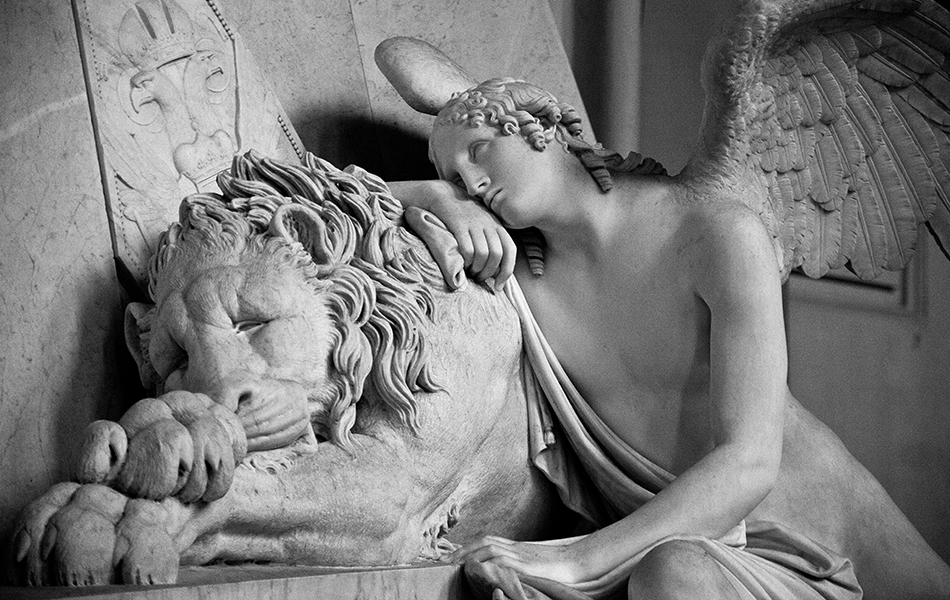March 04, 2022

Imagine your hair doing what it’s supposed to. Moving effortlessly and falling back in to shape. Day in day out. Whether you swing your long hair around, or run your hands through a short hair cut.
Easy to style, it helps you feel lighter, freer and younger. Like it’s part of you rather than something sitting on top, or clinging lankly around your shoulders.
Cast your thoughts back to your last haircut; it‘s most likely that your hair was cut wet. Don’t you think that’s odd?
The couturier doesn’t dunk the fabric in water before draping it over you to decide the line and fall.

The topiarist doesn’t flat pack the hedge before carving a shape.

Sculptors and kitchen fitters all cut stone. But one works organically in 3 dimensions. The other cuts in 2 dimensional sheets. Working in 3D requires far more technical skill and artistry. As Michaelangelo or Canova would attest.
But most hairdressers cut hair flat and wet because it’s quicker, simpler and requires infinitely less skill and effort from them.
Wet cutting eliminates nature’s variables, shortcuts the process and limits the client’s hairstyle choices. The client ends up with an identikit hairstyle which ignores their unique features or hair type. Today, almost all salons and hairstylists follow the wet-cut technique derived from the 1960s Bob revolution.
“Michael Van Clarke does the best haircuts in London” – Elle
But these high street wet cut systems don’t work well beyond a few limited hairstyles. Passable as they may be, not everyone wants someone else’s replica haircut.
And as a defence, hairdressers have educated most people to think they have bad hair. But it’s not true. It’s their limited wet-cutting methods that so often leave dissatisfied clients struggling with their hair at home and it’s why the majority of UK clients are looking for another stylist before the 4th haircut. Our average client has been with us 7 years, hundreds for over 30 years. This loyalty is fundamentally due to our unique cutting method, The Diamond Dry Cut™
The Diamond Dry Cut™ is a precise approach to cutting hair in its natural 3-Dimensional state. The client sees the shape evolving as the hairdresser sculpts organically.
This method is taught in the Academy of the Michael Van Clarke salon, and, along with an exceptional teaching programme, has led to winning multiple industry awards for training.
Benefits
• Sculpted dry so you see the shape evolve
• Personalised to your unique features and hair type so looks way better
• Structurally well balanced so is easy to manage and falls back into place naturally
• Precisely refined so hair cut lasts much longer
Hair is first washed and conditioned with Michael’s ‘3 More Inches’ hair care range and then expertly diffuse dried. How it moves and falls naturally around the face can then be clearly assessed. The hair is divided into the diamond pattern for cutting to create a precise and totally personalised style; looks that are totally unique to each individual client, and work with the nature of the hair to look its best, as easily as possible, for as long as achievable.
“The Haute Couture haircut” – Tatler
The transformative effects of hair are well documented. And a great personalised haircut is often the trigger to raised confidence and self esteem.
The method is built on observations by Buckminster Fuller, the prolific inventor of the 20th century. He named and identified the geodesic dome as a guide to structurally divide a curved surface. This also relates to the area of the human skull covered in hair. We can see this diamond pattern in curved architecture like the Gherkin, the Epcot Centre and in the leather patchwork of a football.
“The best cut - man's a genius” – Beauty Editor – She Magazine
The Michael Van Clarke Diamond Dry Cut™ method and Precision Styling™ are the result of four decades of obsessive refinement. All in the most challenging marketplace of the world’s leading capital city. Epitomising precision, effortless style and perfection, they are built on a deep understanding of the simple eternal truths of nature and three generations of couture hairdressing.
“What an experience, I am a total convert to the Diamond Dry Cut. The more people that hear about Michael Van Clarke the better! I've had so many compliments for my haircut - what a first, it's fantastic.” - London Evening Standard
Sassoon brought precision to cutting hair with his 1960s Bobs. Leonard of Mayfair sought fluid individuality. Our Diamond Dry Cut™ brings absolute precision and unique personalisation together in a revolutionary method.

Michael Van Clarke
March 24, 2023
March 20, 2023
March 20, 2023
How many Bobs have you got?
These quick clunky haircuts are becoming prolific as hairdressers become less and less able to layer hair properly. Emily had the very common 3-step Bob. The baseline, a step four inches off the bottom, and a sort of torn irregular piece suggestive of a long

Exclusive Offers Every Month
Sign up to our newsletter to receive 15% off your first order.